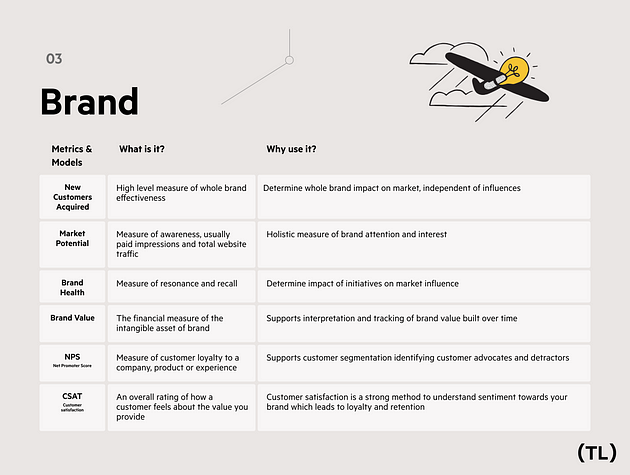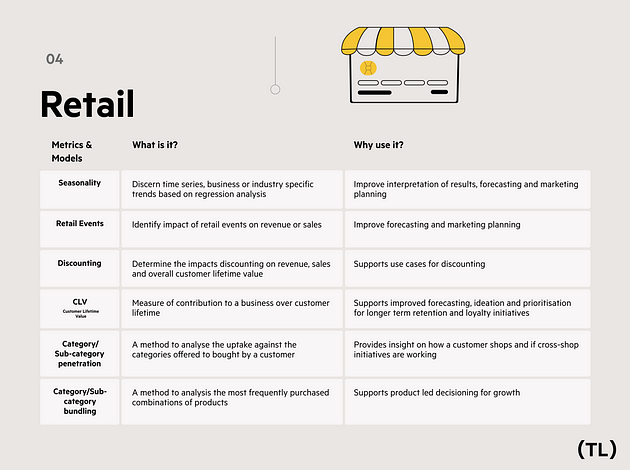Traditional retail growth has historically been measured by sales of products. Enter industry disruptors like Amazon and you begin to see the adoption of a more software growth mentality.
As a result, measurement in retail has become unnecessarily complex for organisations. So, this begs the question: how do you measure things properly?
Often there is a focus on vanity metrics such as clicks, opens, and impressions — but without a greater understanding if all your efforts are equating to a larger outcome of customer and commercial impact.
To help you look beyond these vanity metrics, here’s what we consider a must-have for any retailer looking to make informed decisions around growth, retention, brand, and retail.
Growth
Growth metrics and models are all about the incremental increase of the bottom line (revenue, customer growth, profit).

Retention
Retention metrics and models relate to measuring the retained value of your customer.

Brand
Brand metrics and models measure the perception of value of the positioning and purpose of your brand in market, and if you are actually delivering on the promise.

Retail
Retail metrics and models relate back to the product and industry. What is the offer you have? Why is it working? And how?

These analytics metrics and models should not be used as a ‘tick the box’ solution, as not all of them will be applicable to your organisational goals. However, thinking beyond the usual vanity metrics is crucial for the future of your analytics reporting.
Instead of looking at clicks, start to look at database engagement. Instead of looking at conversion rates, start to look at customer growth or active customers.
After all, do you really think it’s the same 20% of your audience always opening your emails? Or is it changing?
The takeaway
Establish your baseline! Take time to understand what you are trying to achieve by investigating the problem further. Do you have a retention problem? A new client problem? Or maybe a value problem?
Whatever it is will inform your strategy, meaning you then have a baseline to measure, with the ultimate goal of understanding the true effectiveness of your efforts.
We urge you to use this framework to take note, reflect with your teams, investigate, and align on the metrics and models that will best support your commercial and marketing strategies.